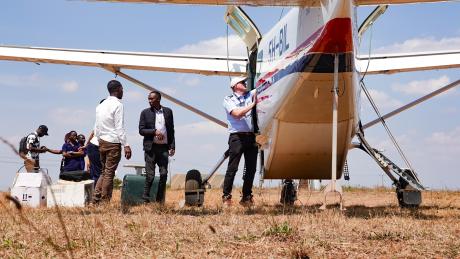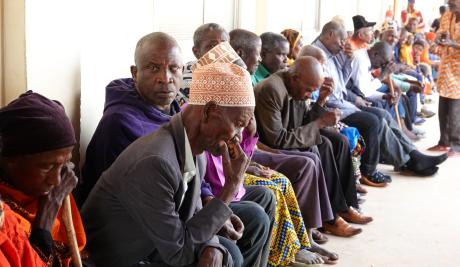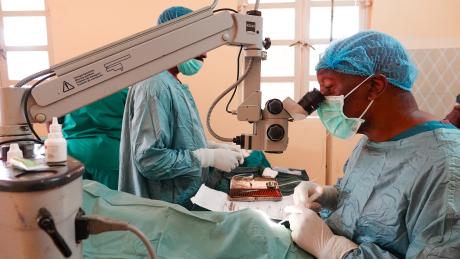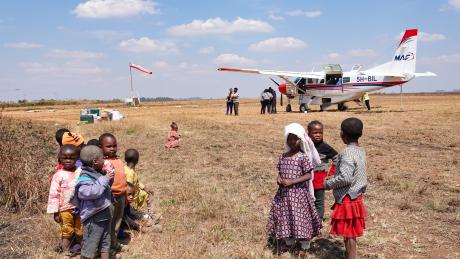
For the first time since the Cessna Caravan joined their fleet, MAF in Tanzania have made a long-range medical flight—transporting an eye surgery team to reach patients in one of the country’s most inaccessible communities.
“This eye surgery camp was a trial-run after many years of not having the necessary resources,” said Stewart Ayling, MAF’s Country Director in Tanzania. “But having seen the impact of the work, our whole team is motivated to ensure this camp is the first of many.”
Mission Aviation Fellowship flew renowned Tanzanian eye surgeon Dr Erick Msigomba and his team from Njombe to Tabora to carry out cataract surgeries. The trip marked a trial-run for MAF, launching a new chapter in its vision to bridge the healthcare gap in rural areas.
“With our aircraft, we can help with the geographical obstacles, so that Dr Erick and his team can bring hope and healing to people who are suffering from the isolation that blindness brings,” added Stewart.
In the rural district of Kaliua, over 130 kilometres from Tabora town, patients gathered at St John Paul II Hospital. Most had been blind for years, but none could afford to travel to the city for treatment.

“There is no eye surgeon in Tabora,” said Dr Msigomba. “Even the regional hospital has no specialist. Only those with money can travel to places like Dodoma or Mwanza. Most just stay blind.
“But most of the patients here have blindness that can be reversed: simple cataracts. It’s not total blindness. With just a little help, we can restore their sight.”
Dr Msigomba would never have made the journey by road. It would have taken two full days, through dust and bumps, risking damage to the delicate tools.
“I am coming from the Southern Highlands. From the south up to here is about 1,000 kilometres. By car, it’s impossible with our delicate equipment,” he said.
“But MAF dropped me safely, with all my tools. That made everything possible.”
MAF dropped me safely, with all my tools.
Dr Amos Mahona, the medical officer in charge at St John Paul II Hospital, sees the effects of this gap every day.
“Our patients travel long distances, sometimes 200 kilometres, just to reach this hospital,” he said. “And when they get here, we have to tell them we can’t help.
“We feel bad, because this hospital was built to help the poor. But we don’t have eye specialists.”
Over the course of a few days, Dr Msigomba and his team saw 200 patients and performed 60 cataract surgeries. Among them was Issa Nassoro Lukamya, who had lived with vision loss for over two years.

“Before the surgery, I felt like I was in a different world from everyone else,” Issa said.
“Now, I’ve started seeing better. I can walk without feeling dizzy. And after a few days – God willing – I’ll be able to see, just like others.”
Another patient, 82-year-old Yasini Idd Malembeka, was once a mechanic. But over time, cataracts stole his ability to work.
“I was only using one eye. I struggled for seven years,” Yasini said. “Before, I just saw a blur. Now, I see clearly.”
Dr Msigomba praised the capacity of the eleven-seat Caravan.

“Thank you very much for your support, especially the plane you provided us,” he said. “It is really a big one and was able to carry all our equipment.”
Even with this successful camp, Dr Msigomba estimated that many more await treatment.
“We only reached two districts in Tabora: Kaliua and Urambo. That’s just a third of the region,” he said.
“We are still asking MAF to increase the frequency of flights to Tabora so we can serve the people who cannot go to the city to get eye care.”